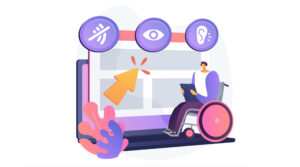Rights-based guiding principles
Table of Contents
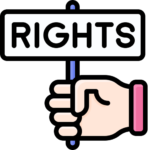
Co-creating disability inclusion at university
- The provision of an accessible and inclusive teaching and learning environment (both physical and virtual) and educational materials (both physical and digital) experiences are important to all students including students with disabilities and are fundamental to education.
- To eliminate ableism, and respect and value the presence of inherent diversity among university members with disabilities.
- Ableism is broadly conceptualized as the traditional and compulsory preference for “healthy” body states (not having any impairments) that are considered to be normative in the society, along with a wide range of stereotypes, prejudice and discrimination against people with disabilities, who are considered to be “abnormal”, and deviation from the norm. [Reference: Friedman, C., & Owen, A. L. (2017). Defining disability: Understandings of and attitudes towards ableism and disability. Disability Studies Quarterly, 37(1).]
- To actualize the United Nations Convention on the Rights of Persons with Disabilities (CRPD), particularly Article 9 – Accessibility and Article 24 – Education (and CRPD General Comment No.4 on Article 24: Right to inclusive education).
- To actualize the United Nations Sustainable Development Goals (SDGs), particularly SDG 4: Quality education and SDG 10: Reduced inequalities.
- There is an obligation for an educational establishment to provide reasonable accommodation for students with disabilities, unless such provision imposes unjustifiable hardship. Such obligation has been recognized in the Code of Practice on Education issued by the Equal Opportunities Commission in accordance with the Disability Discrimination Ordinance (Cap. 487) (DDO) which came into operation in Hong Kong in 1996 and laid down equal opportunity in education for people with disabilities in Hong Kong.
- To serve as an essential context for Universal Design for Learning (UDL) to occur effectively.
- To serve as an essential context of positive wellbeing by minimizing the potential burden triggered by inaccessibility experiences and recurrent negotiation for accessibility arrangements.
- To eliminate ableism, and respect and value the presence of inherent diversity among university members with disabilities.
- Detailed introduction to co-creating an accessible and inclusive teaching and learning environment at higher education institutions in Hong Kong can be found in the Guideline on fostering practices for disability inclusion at higher education institutions (Trial Version, November 2021). The Guideline is developed by Dr. Patcy Yeung from the Faculty of Education and her team of the teaching development project on enhancing learning experience for students with visual impairment in higher education.
- The global COVID-19 pandemic concern has led to the increasing adoption of virtual teaching and learning to maintain social distancing. While virtual teaching and learning can open many opportunities and innovative educational approaches for teachers and students, the potential inaccessibility of the virtual environment and digital educational materials would bring about immense challenges to students with disabilities that would in turn hinder the teaching and learning experiences and outcomes. It is important to understand more about possible ways to enhance the accessibility of virtual teaching and learning to cater for diverse needs of students.
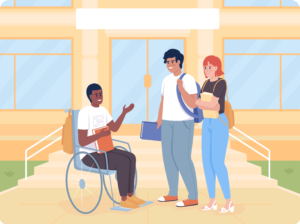
Rethinking disability
- When talking about students with disabilities, we may usually think of the following groups of individuals. However, some students may have multiple disabilities. Some disability might be immediately visible or invisible. Some disabilities might be partly visible and invisible. Some students may have other disabilities not listed below.
- Students with attention deficit and / hyperactivity disorder
- Students with autistic spectrum disorder
- Students with cognitive disability
- Students with chronic illness
- Students who are deaf or hard-of-hearing
- Students with intellectual disability
- Students with mental illness
- Students with mobility disability
- Students with physical disability
- Students with psychosocial disability
- Students with specific learning disability
- Students with speech disability
- Students with visceral disability
- Students with visual impairment
- It is important to note that disability does not simply refer to personal medical conditions.
- According to the World Health Organization, disability refers to the interaction between individuals with a health condition and personal and environmental factors (e.g., negative attitudes, inaccessible transportation and public buildings, and limited social supports).
- Disability experiences can happen when environmental conditions do not support an individual’s characteristics and needs. The context matters.
- People are disabled as a product of the external environmental and attitudinal barriers they encounter. Barriers should be eliminated to promote the more welcoming and inclusive participation of people with disabilities. We should recognize our society’s responsibility to remove barriers that limit the lives of people with disabilities and establish accessibility to create equal opportunities and choices for people with disabilities. This approach leads to inclusion.
- Students with disabilities have diverse learning and access needs. Students having the same type(s) of disability do not necessarily share the same set of learning needs and/or accessibility support. It is important to talk to each student with disabilities to understand their needs and explore the required accessibility support together.
- Some students may have temporary disabilities or situational limitations.
- Scenario 1: The eyeglasses of a student was broken, and it takes a few days to receive a new pair. Without the eyeglasses, the student struggles to read the text on the computer screen as usual. The student may be experiencing temporary disability.
- Scenario 2: A student is attending online lecture at home. At the same time, renovation work is being done at their neighbour’s home. The student struggles to listen to what the course instructor is saying due to the loud noise from the renovation work. The student may be experiencing situational limitation under this context.
- Universal Design for Learning (UDL) and accessibility practices would benefit everyone including students with disabilities, temporary disabilities, or situational limitations, to cater for diverse learning and access needs of every student.
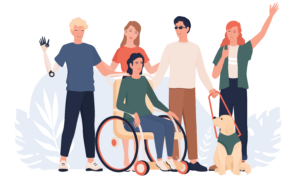
Universal Design for Learning (UDL)
- Universal Design for Learning (UDL) framework and guidelines are proposed by CAST (Centre for Applied Special Technology) to help ensure effective access and meaningful participation in teaching and learning opportunities.
- UDL maximizes equal opportunities for students with disabilities and the effectiveness of teaching and learning to cater for the inherently diverse characteristics and needs of all learners.
- UDL emphasizes that it is important to provide multiple means, options, and autonomy for all learners to accommodate inherent diversity in individual characteristics and needs. There is no single means of engagement, representation, or expression that will be optimal for all learners.
- Instructors may make use of different types of educational tools and teaching methods to provide diverse forms of engagement in teaching and learning activities.
- Group discussion, e.g., chat box or breakout rooms in ZOOM
- Collaborative work, e.g., shared documents for group editing, or Miro
- Polling, e.g., polling functions in ZOOM, or Mentimeter
- The same content can be presented in different ways to accommodate individual needs to facilitate learners to perceive and comprehend effectively.
- Example 1: Some students with visual impairment may require the text-based content to be converted to and presented as Braille for reading.
- Example 2: Screen reader users may require text description of graphical content to understand the content.
- Example 3: Deaf and hard-of-hearing learners may require sign language interpretation and/or captioning to understand the audio content.
- Learners are encouraged to express their ideas and take part in learning activities by different means by taking their individual needs and characteristics into account. For example,
- During the online class, students are allowed to express their ideas by multiple means, such as writing in chat box, verbal response, drawing, and/or responding to polling.
- Instead of raising up hands, some learners with mobility disability may take part in class activities by using electronic devices to raise their questions or write their answers in response to the instructors’ questions.
- Some learners with learning difficulties may prefer verbally expressing their ideas instead of writing their answers in words.
- Moreover, universities’ educational aims emphasise students’ whole-person development, their self-exploration, and the actualisation of students’ interests, potential, and pursuits. We should respect students’ self-determination and decision-making. We should not limit their choices and opportunities based on their disability status. Whole-person development emphasises the progressive process of the holistic enhancement of multidimensional capacities – that is, learners’ attitudes, performance, and potential. It essentially requires accessible physical and digital teaching and learning environments, along with UDL approaches, so that students can truly enjoy engaging in wide range of academic and non-academic activities that can actualise their potential, aspiration, and whole-person development.
- The provision of an accessible physical and digital learning environment, along with accessible teaching and learning materials, is the essential context in which the Universal Design for Learning (UDL) and whole-person development are effective.
- References:
- The UDL Guidelines. The Center for Applied Special Technology.
- The Center for Universal Design in Education.
- Burgstahler, S. E. (Eds.). (2015). Universal design in higher education: From principles to practice. Harvard Education Press.
- Burgstahler, S. E. (Eds.). (2020). Creating Inclusive Learning Opportunities in Higher Education: A Universal Design Toolkit. Harvard Education Press.
- Frequently Asked Questions about UDL Guidelines. The Center for Applied Special Technology.
- Universal Design in Education: Principles and Applications. The DO-IT (Disabilities, Opportunities, Internetworking, and Technology) Center, University of Washington.
- Universal Design for Learning (UDL) (YouTube). The University of Hong Kong.
- Instructional Design for Inclusive Learning in Higher Education. (YouTube). The University of Hong Kong.
- Teaching Support for Inclusive Learning in Higher Education. (YouTube). The University of Hong Kong.
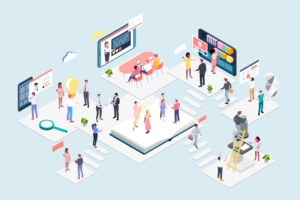
Digital accessibility and university education
- University education involves a wide range of digital platforms and materials including but not limited to following items.
- Websites and social media of the university, affiliated administrative and academic units (both internal websites and those bought from external vendors);
- Student and staff portals;
- Learning management systems;
- Teaching and learning resources, e.g., lecture slides;
- Educational software and programmes;
- Electronic documents; and
- Emails.
- People with disabilities have diverse access needs and may interact with digital materials with diverse strategies and/or assistive technologies. They are often denied access to the digital platforms and materials. Digital accessibility practices is essential for university members with disabilities.
- Digital accessibility refers to the inclusive practice of ensuring anything digital can be accessed by wide range of users regardless of disabilities. It covers websites, electronic documents, video, audio, animations, mobile applications, software, hardware, and other digital materials.
- Digital accessibility includes web accessibility. The World Wide Web Consortium (W3C) Web Accessibility Initiative (WAI) develops the Web Content Accessibility Guidelines 2.0 (WCAG) and other guidelines and standards to help everyone understand and practice web accessibility.
- The WCAG international standard documents how to make web content and its associated electronic information and communication, and multimedia materials more accessible to people with disabilities. The basic accessibility principle is to make the content perceivable, operable, robust, and understandable (“POUR”) by everyone regardless of disabilities.
- Digital accessibility practices are central to accessible virtual teaching and learning environment that would benefit all students and staff members regardless of disability status and under various situations.
- Digital accessibility would reduce barriers common to users of mobile devices and people with disabilities.
- Students and staff may use different electronic devices for participation in virtual teaching and learning, like laptop, tablet, or smartphone. There could be many reasons when people choose which device they want to use. For example, the mobile device is the only device that they have for the moment, or they are more comfortable with using the certain device.
- Digital accessibility practice would benefit students with low bandwidth connection to the Internet or using older hardware and software. It influences the engagement of teachers and students in virtual teaching and learning activities.
- Some students may live in areas where high speed connections to the Internet is unavailable.
- Some students may not be able to afford high speed connections to the Internet, updated software and programmes, computer operating systems and browsers, and/or advanced hardware, due to financial situation and/or other factors.
- It is common to create separate versions of the materials which address certain specific needs of certain groups of individuals as a kind of reactive practice. However, it would also be great to create a single version of the materials that could cater for the diverse needs of a wider range of groups of individuals (i.e., “born accessible”) at the outset.
- Always consider accessibility when you design and deliver educational activities, regardless of whether you have students with disabilities in your class or some students approach you with request for accessibility accommodations.
- Some students with disabilities may not self-identify or register with the university’s record.
- You may not be aware of some students with invisible disabilities in your class, e.g., students with dyslexia.
- Do not address accessibility issues only if any students draw your attention to certain accessibility issues.
- Some students who encounter barriers in accessing the teaching and learning materials and activities may not proactively voice out the problems.
- If the inaccessible teaching and learning materials and activities are reused every semester, the number of students who cannot access those materials and activities may accumulate as time goes by. It would hamper the effectiveness of teaching and learning in the long run.
- Consider accessibility practices from the outset whenever designing teaching and learning materials and activities. It would be relatively easier and time-saving to modify materials that are somewhat accessible than to try to convert inaccessible materials to become more accessible.
- Do no assume any teaching and learning platforms, methods, or materials are already “fully accessible”. Accessibility arrangement is an ongoing process. Although there are fundamental domains of accessibility practices, we should always take the diversity of user needs and situational contexts into consideration.
- Accessibility support arrangements should not be solely determined by the disability types. The types and extent of accessibility needs of each person are unique and may vary across different situations.
- References:
- Accessibility Fundamentals. World Wide Web Consortium (W3C) Web Accessibility Initiative (WAI).
- Overview of teaching and advocating for web accessibility. World Wide Web Consortium (W3C) Web Accessibility Initiative (WAI).
- Web Accessibility Handbook. Office of the Government Chief Information Officer, the HKSAR Government.
- Creating Accessible Content. Australian Disability Clearinghouse on Education and Training.
- Accessible Teaching. Yale Poorvu Center for Teaching and Learning.
- AccessDL. The DO-IT (Disabilities, Opportunities, Internetworking, and Technology) Center, University of Washington.
- 20 Tips for Teaching an Accessible Online Course. The DO-IT (Disabilities, Opportunities, Internetworking, and Technology) Center, University of Washington.
- Accessible Digital Learning Portal. UNICEF.
- Teacher’s guide: How to make remote learning accessible. UNICEF.
- Microsoft accessibility features. Microsoft.
- An inclusive, accessible Microsoft 365. Microsoft.
- Accessibility help. Microsoft.
- Make your content accessible to everyone. Microsoft.
